While noted for their historical charm and timekeeping abilities, some of Montreal’s clocks are reputed to be haunted. Most of Montreal’s haunted clocks are located on St. James Street, an area associated with the extreme desecration of French colonial cemeteries by various financial corporations.
Welcome to the ninety-fourth installment of the Haunted Montreal Blog!
With over 500 documented ghost stories, Montreal is easily the most haunted city in Canada, if not all of North America. Haunted Montreal dedicates itself to researching these paranormal tales, and the Haunted Montreal Blog unveils a newly researched Montreal ghost story on the 13th of every month!
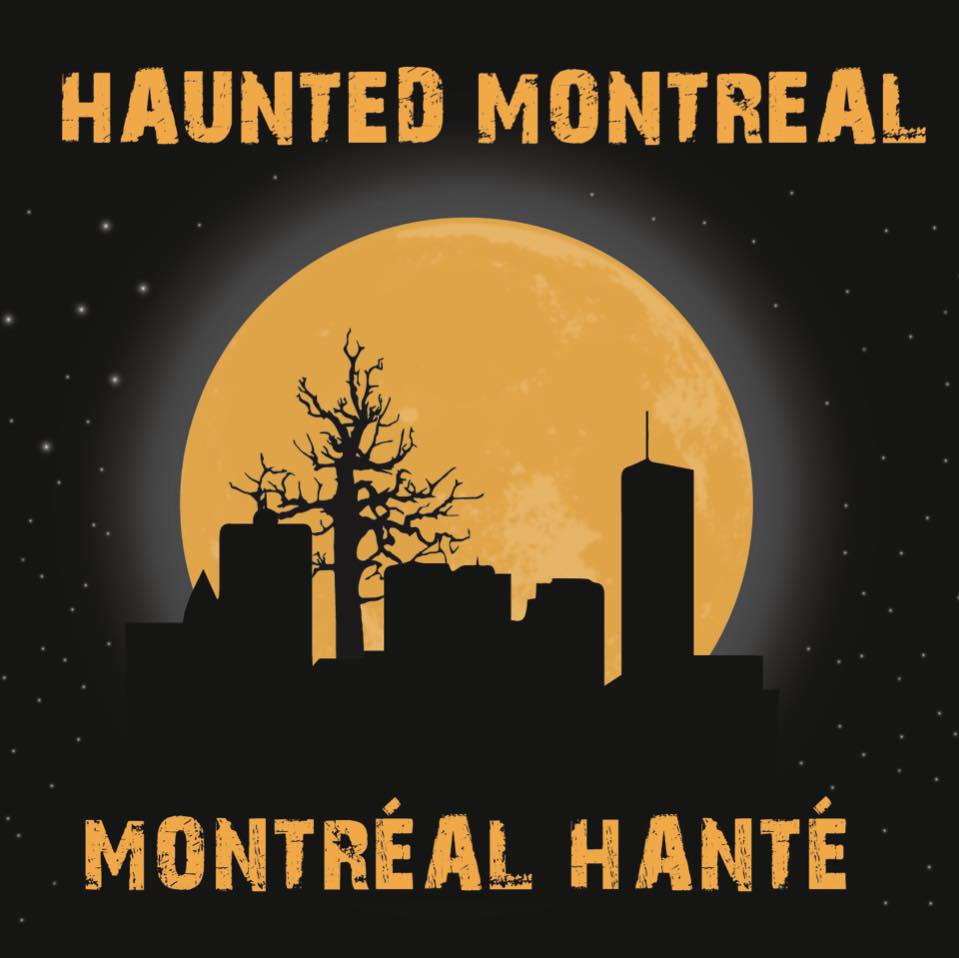
This service is free and you can sign up to our mailing list (top, right-hand corner for desktops and at the bottom for mobile devices) if you wish to receive it every month on the 13th! The blog is published in both English and French!
Haunted Montreal’s seasons of public outdoor tours is now in full swing! Offered every Friday and Saturday night, we have four ghost tours on rotation (Old Montreal, Griffintown, Downtown and Mount Royal.)
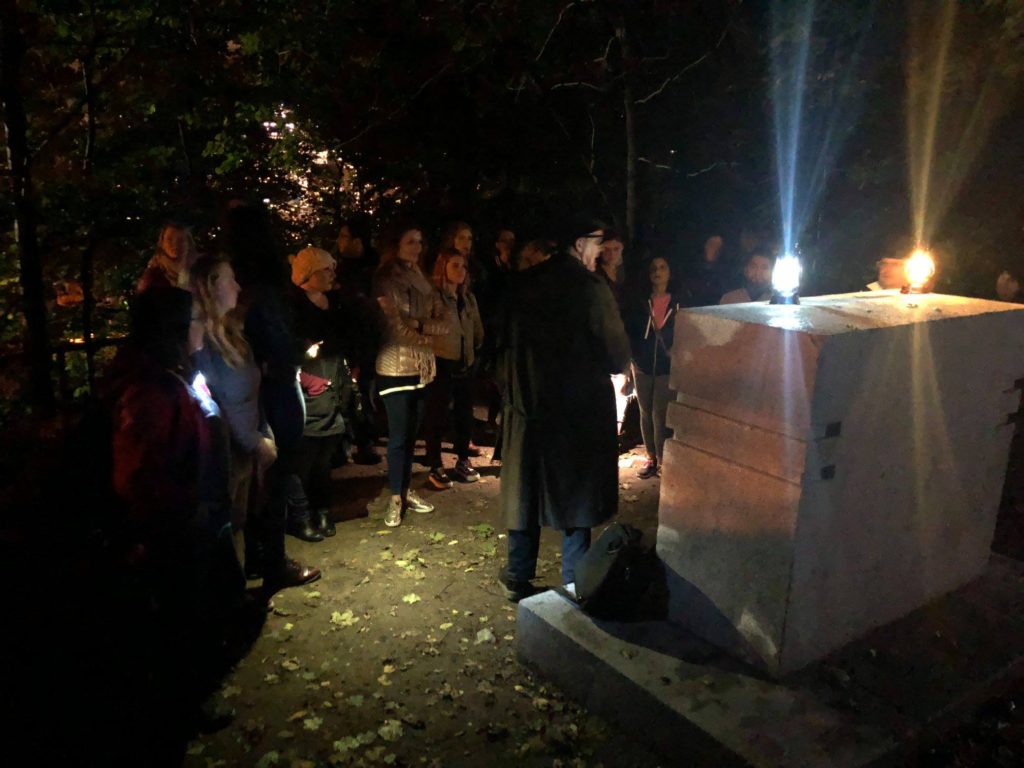
Our Haunted Pub Crawl is also offered every Sunday at 3 pm in English. For tours in French, these happen on the last Sunday of every month at 4 pm.
Our Paranormal Investigation in the Old Sainte Antoine Cemetery happens on the first Friday and Saturday of every month.
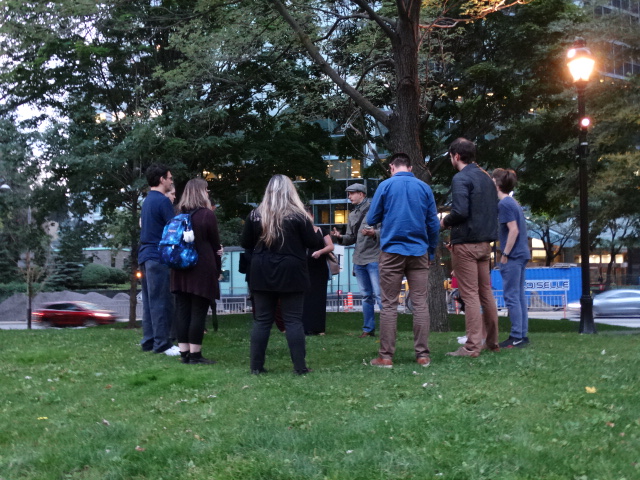
Private tours for all of our experiences (including outdoor tours) can be booked at any time based on the availability of our actors. Clients can request any date, time, language and operating tour. These tours start at $190 for small groups of up to 7 people.
Email info@hauntedmontreal.com to book a private tour!
Our Virtual Ghost Tour is also available on demand!

Want to give the gift of a haunted experience?
You can now order a Haunted Montreal Gift Certificate through our website. They are redeemable via Eventbrite for any of our in-person or virtual experiences. There is no expiration date.

Lastly, we have an online store for those interested in Haunted Montreal merchandise. More details are below in our Company News section!
This month we examine the numerous forgotten burial grounds that litter the historic district of Old Montreal – and the paranormal activity associated with them!
Haunted Research
The City of Montreal welcomes millions of tourists every year. Around 85% of them visit the historic district of Old Montreal. What these visitors likely do not realize is that they are literally walking over the Dead. Numerous forgotten cemeteries, which still lie beneath the streets and buildings, haunt Old Montreal.
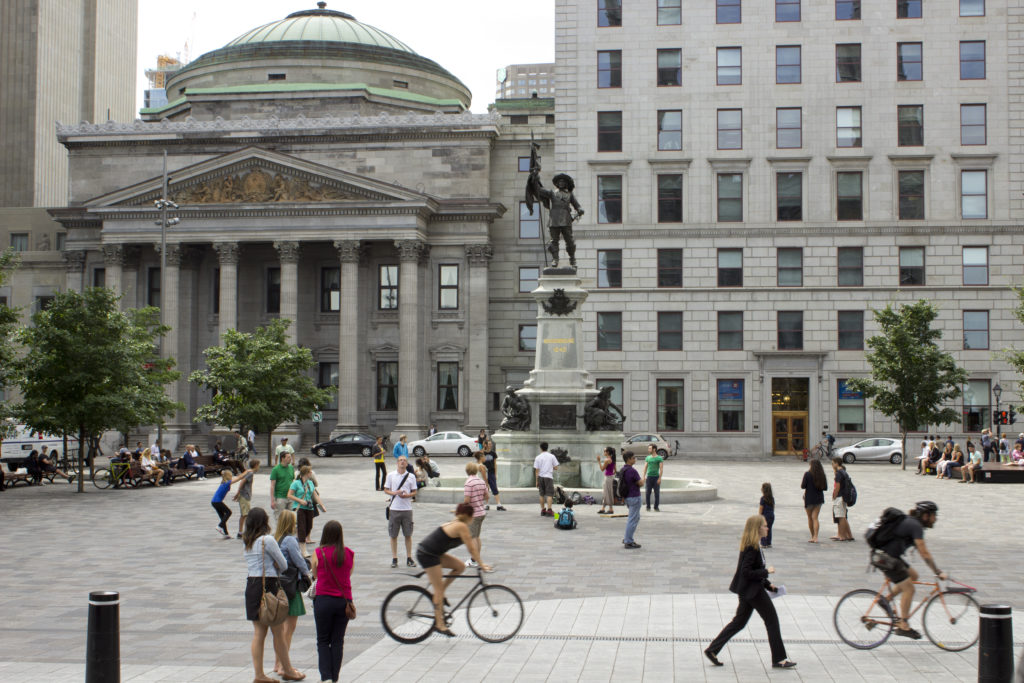
Indeed, there are at least a dozen graveyards in the district. A handful of them are commemorated but most are totally forgotten. Almost all of these colonial burial grounds are reputed to be haunted.
Quebec City, which has mapped out its colonial burial grounds, is light years ahead of understanding where their colonial Dead are buried.
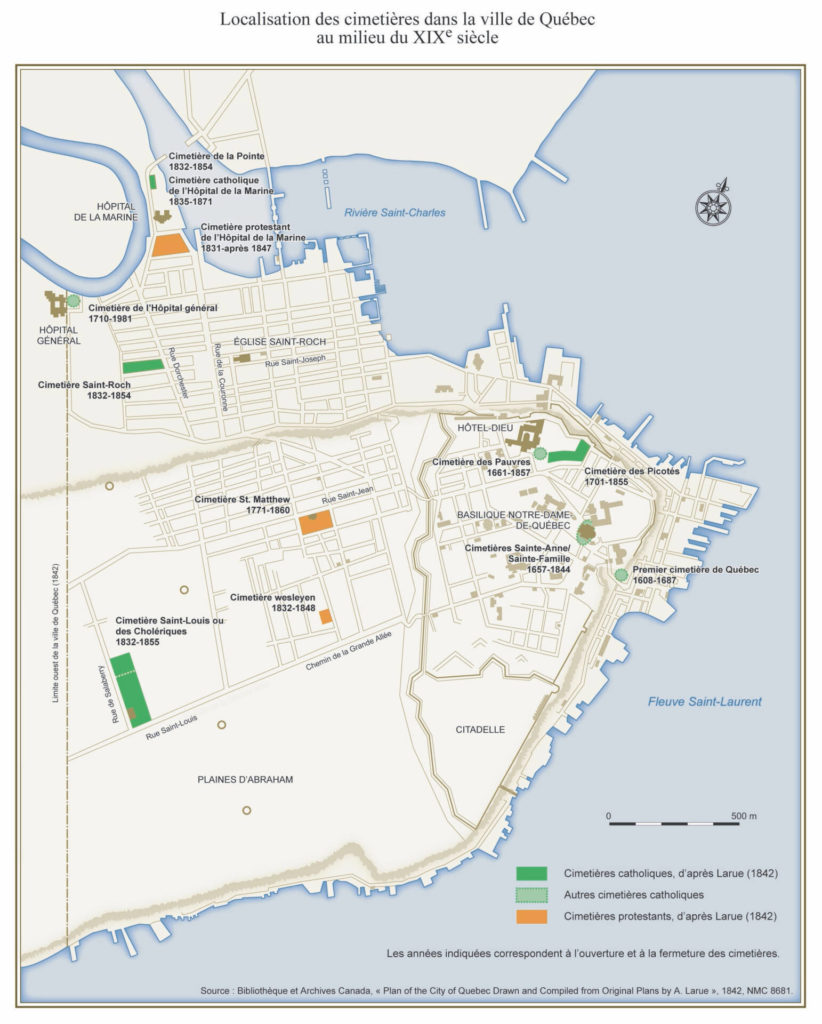
In Montreal, one must dig deep into historical accounts and old maps to try to piece together cemetery locations and statistics of the Deceased. There are some conflicting reports, but it is possible to obtain a good idea where these colonial graveyards were located. A tally of the graves listed in the registers of the Parish of Notre-Dame, between 1642 and 1800, reveals that Old Montreal served as the final resting place for more than 21,000 people.
Montreal’s first colonial cemetery sat right beside Fort Ville-Marie, as the original colony was called.
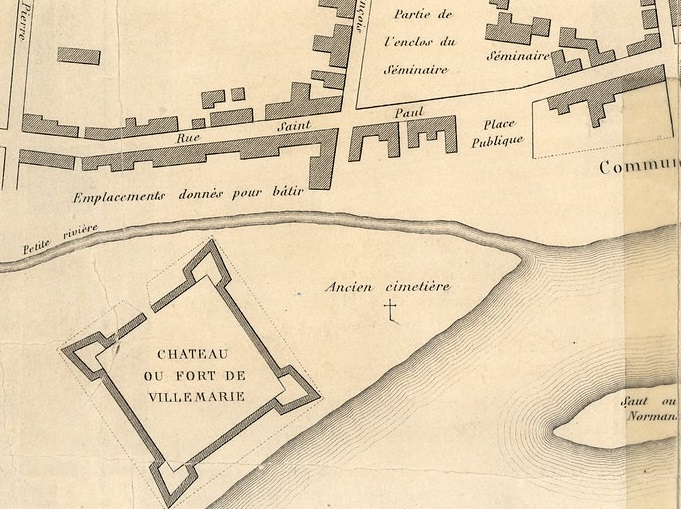
Founded on May 17, 1642, by the “Notre-Dame Society of Montreal for the Conversion of the Savage Peoples of New France”, the colony was built without permission on the Mohawk territory of Tiohtià:ke.
At the time of colonization, the Mohawk Nation was not in this part of their vast territory. When scouts discovered that the French were attempting to colonize Tiohtià:ke, a brutal war erupted between the French and the Haudenosaunee (an alliance of Five First Nations at the time, including the Mohawk, Oneida, Onondaga, Cayuga and Seneca.)
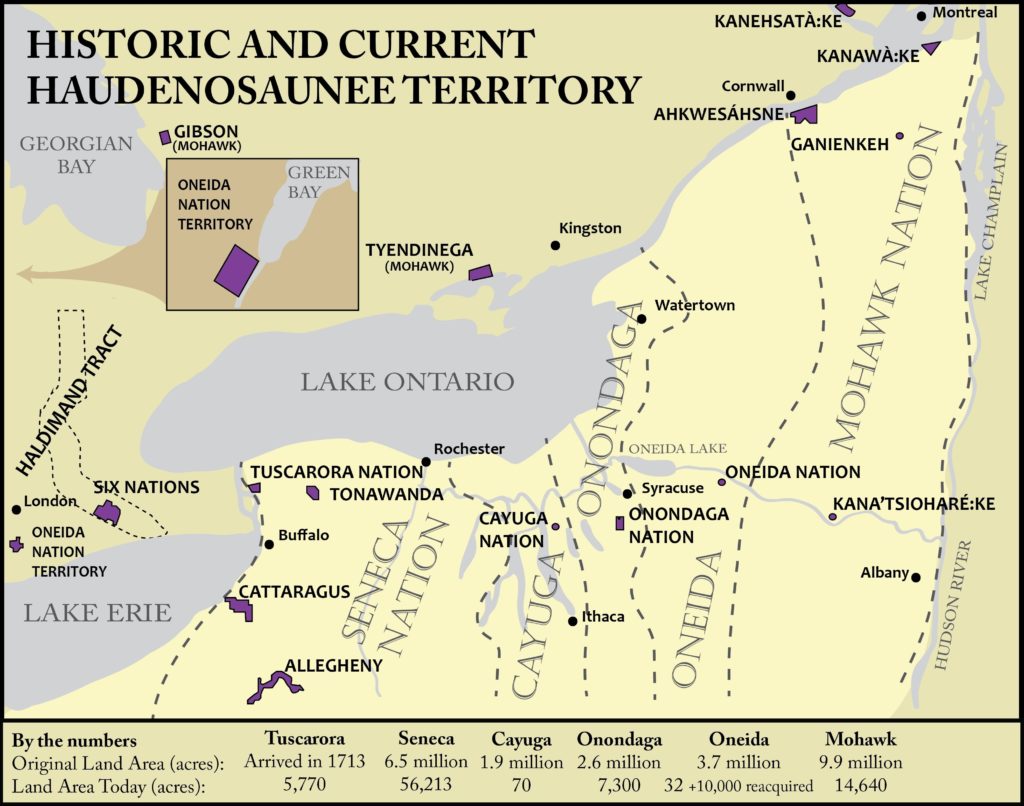
Needless to say, when there is warfare cemeteries tend to fill up quickly.
The first colonial burial site in Montreal was at Pointe-à-Callière, on the piece of land jutting out where the St. Pierre and St. Lawrence Rivers met. The first interment took place on June 9, 1643. The deceased was Guillaume Boissier, a carpenter from Limousin in France.
Over the next 11 years, 37 more people would be buried there. Many settlers and their allies died in warfare with the Haudenosaunee Confederacy, who were defending Mohawk territory from the French colonization efforts.
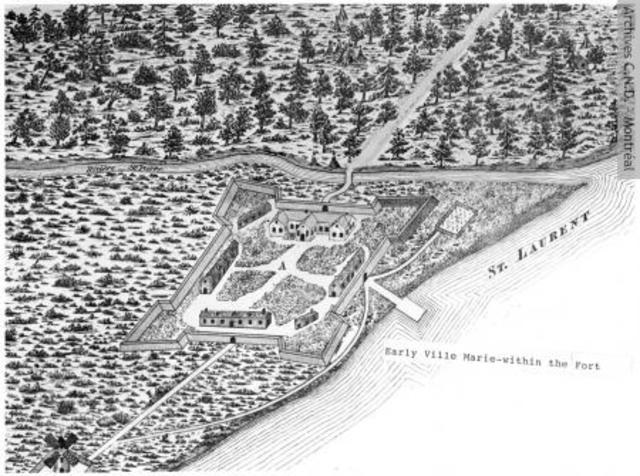
This was one of the few cemeteries ever to have both Europeans and Indigenous people buried together. Twelve bodies are Indigenous from the Anishinaabe and Wendat First Nations, which were allied with the French colonists. As for the French colonists who perished, the archives include well-known names such as Archambault, Bonenfant, David, Hébert, Tessier and Thibault.
In The First Catholic Cemeteries of Montreal, this burial ground was described as “a large meadow enlivened with the warblings of beautifully feathered birds, and adorned with a variety of the most exquisite flowers.”

However, due to its location between two rivers, the Pointe-à-Callière cemetery frequently flooded. Such was the case on January 15, 1654, for the burial of a colonist named Frangois Dhaidin. It is noted in the burial register that the floodwaters prevented access. As such, he was buried elsewhere in a location that is unknown today.
Furthermore, bodies were only buried 30 to 50 centimeters below the ground. With the cycle of freezing and thawing, the bones sometimes rose to the surface.
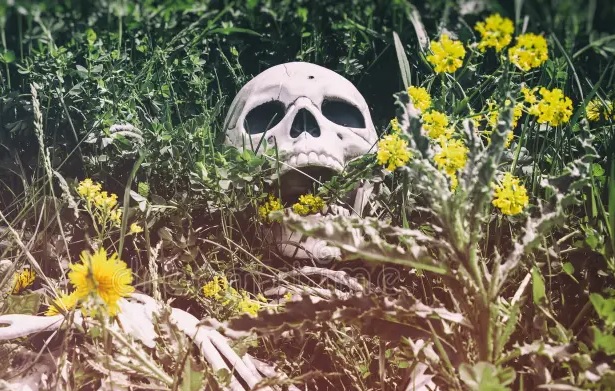
Due to these ongoing and macabre problems, the cemetery closed in 1654, paving the way for a second burial ground in the gardens of the Hotel-Dieu Hospital. It was located at the corner of Saint-Paul and Saint-Sulpice streets near the hospital chapel.
Today, the remarkable first cemetery is located within the Pointe-à-Callière Archaeology Museum. Officials decided to excavate seven tombs, which are on display in the museum’s basement. The remaining bodies still lie beneath the floorboards.
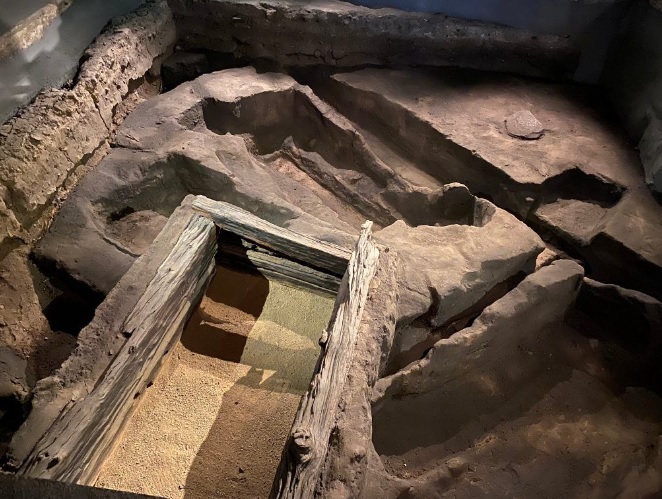
In 1654, a new cemetery was laid out in the in the garden of the Hôtel-Dieu, at the corner of Saint-Paul and Saint-Sulpice Streets. The site may have been chosen because of the presence of the hospital chapel.
The first burial was a colonist named François d’Haidin. As the years passed and the war with the Haudenosaunee Confederacy continued, the cemetery began to fill up with those killed in battle and others who had died of diseases, accidents, or natural causes.
The cemetery had two annexes, one for the poor and one for Indigenous people, whom the French referred to by the racist term “savages”.
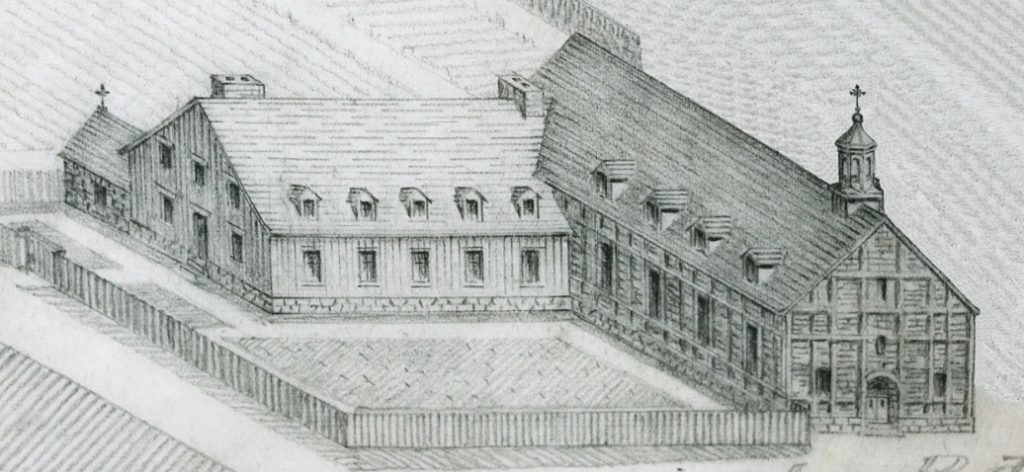
Several years after its establishment, cattle started wandering through the burial ground, grazing and defecating on the hallowed ground. After numerous complaints, religious authorities held a meeting on November 30, 1674, in one of the rooms of the seminary. They resolved to build a wooden fence around the cemetery to keep the beasts from disturbing the dead.
The city’s third cemetery was opened in 1673 when authorities realized that the hospital cemetery would soon be full.
The new graveyard was situated in the commons between today’s St. Paul, St. Sacrement, St. Eloi and St. Pierre streets.
Unfortunately, this third cemetery also suffered from flooding, both in the spring an autumn. Colonists also allowed cattle to graze there.

Approximately 400 people were buried in these commons between 1673 and 1682.
Then, in 1683, the Notre-Dame Parish sold the land at auction. With a church under construction, they needed the money. A colonist named Charles de Couagne purchased the burial ground for the sum of 955 livres. He then subdivided it into plots of land and sold them to other colonists.
A map from 1695 shows that just three years after it closed, several homes had been built over the Dead.
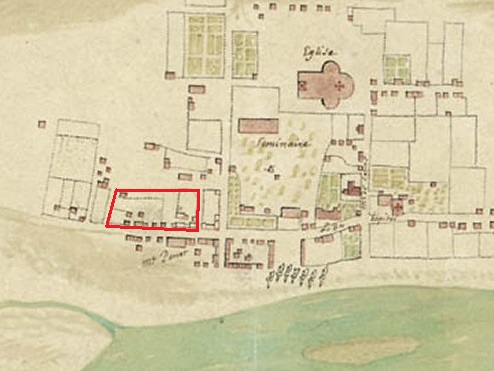
Today, the area is dense with historic buildings but there is no indication that they sit on this old cemetery. There are numerous reports of paranormal activity in this area of Old Montreal, such as floating orbs, disembodied voices and undead spirits roaming the streets at night.
In 1680, the construction of the first Notre-Dame Church included a fourth and more permanent graveyard to welcome the dead on its south-east side. Catholics strived to be buried as close as possible to their place of worship and so it was a popular location to spend eternity.
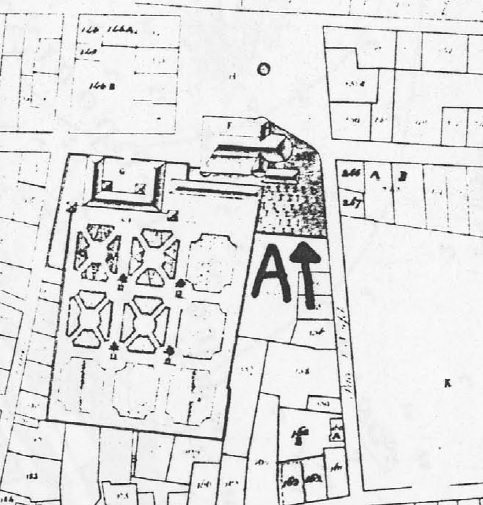
The parish purchased neighboring lots over the years on several occasions when the cemetery needed to be expanded.
It is also noteworthy that people were buried inside the newly-constructed Notre-Dame Church.
A documentary video called In the Shadow of Notre-Dame highlights excavation work at the site of the old Notre Dame Church. In 2001, the ministère de la Culture, des Communications et de la Condition féminine and the City of Montréal assigned archaeologists to examine and then move these graves. They discovered over 100 skeletons in the old crypt and its environs. After recording and analyzing every single bone, the remains were reburied in the Notre-Dame-des-Neiges cemetery on Mount Royal.

Another cemetery was opened in the Place d’Armes in 1685, but was again only used for a few years. It was on a lot at the northwest corner of St. Jacques and St. Francois-Xavier Streets. This graveyard remained in use for only a few years until the bodies were apparently moved to another site a short distance to the west.
In this cemetery, a chapel had been built in the place where the Bank of Montreal is today to deposit the bodies awaiting burial.
With all of the warfare, death and burials, the French authorities decided to fortify the colony. From 1687 to 1689, workers constructed a wooden palisade around the city.
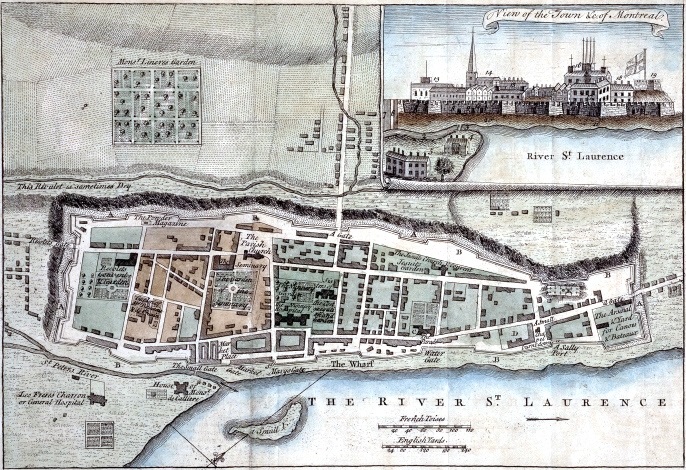
Later, between 1717 and 1744, these were upgraded into stone walls. The fortifications were built by Chaussegros de Lery, a military engineer during the reign of King Louis XV.
The Place d’Armes cemetery would continue expanding westwards, with corpses usually buried beside the stone fortifications.
In 1718, a new cemetery was created, outside the wall. It was beside the new Charon Brothers General Hospital and was opened while the stone walls were being completed.
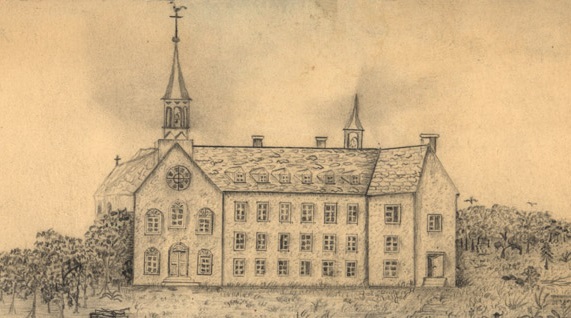
Located outside the city walls, the General Hospital opened in 1694. As a charitable foundation, its main objective was to care for the poor, orphans, the elderly, those vulnerable and single women.
In 1747, management of the hospital was transferred to Sainte-Marie-Marguerite d’Youville and the Order of the Grey Nuns. In addition to its main cemetery, the hospital also included a cemetery for the poor.
When work was done refurbishing St. Pierre Street in 1991, archaeologists discovered a mass grave under the road. They removed the skeletons of several children. Granite markers were then placed on the road to highlight the cemetery’s footprint and an interpretive sign was installed next to the old General Hospital.
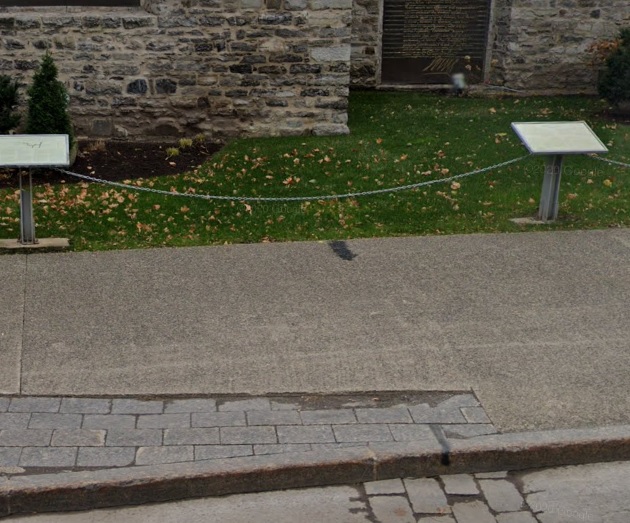
In 1749, a new cemetery was created near the Powder Magazine, allegedly for the poor. This was slightly west of the Place d’Armes Cemetery.
Indeed, it would seem that burial grounds continued to expand westwards along the northern city wall, and then beyond some.
This is where is becomes difficult to ascertain how to separate all these burial grounds, which are now both forgotten and desecrated.
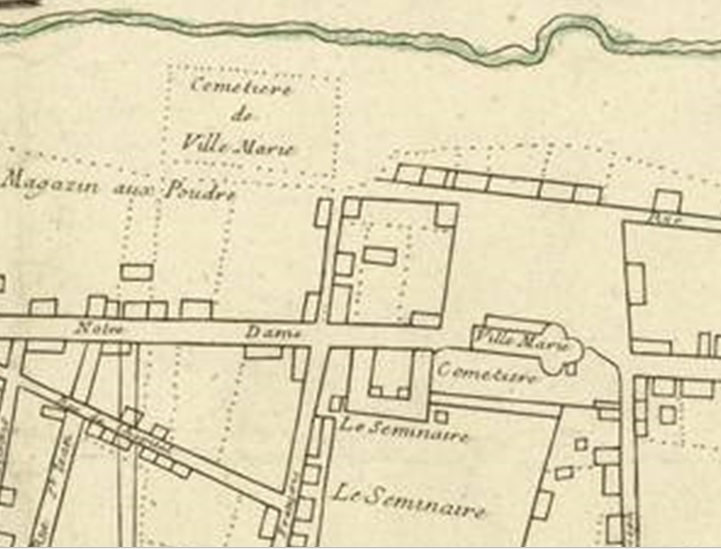
According to the late historian E.A. Collard:
“The principal cemeteries were just inside the northern wall marked by Fortification Lane today. They occupied the area beginning close to the wall and extending down to about the middle of what is now St. James Street. And they ran from about St. Francois-Xavier Street (rue Saint- Francois-Xavier) to the present beginnings of Victoria Square. This means that the buildings on the north side of St. James Street today are standing in these old cemeteries. When the custom of burying “within the walls” was abandoned, most of the old bones were left lying where they had been interred.”
Indeed, when Montreal capitulated to the British in 1760, the new colonial masters also created Protestant cemeteries in the same vicinity along the walls.
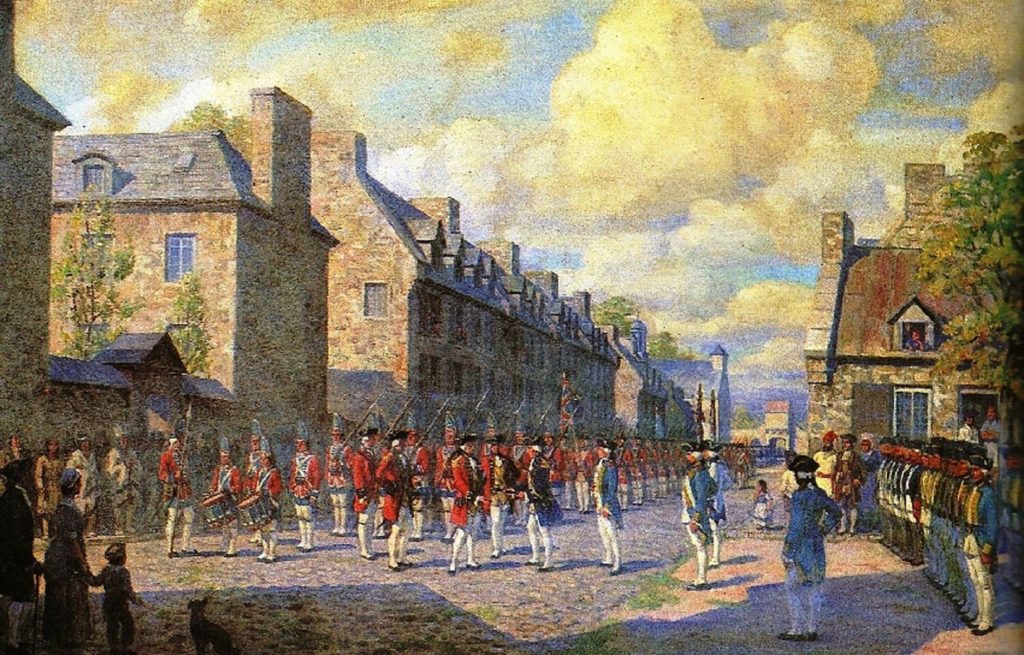
Collard continued: “Later, when foundations and cellars for the buildings on St. James Street’s upper side were being dug the bones were unearthed. Even then, in some cellars, the bones were not all removed. They were left lying above ground. A story of a cellar full of bones is told about a building at or near the corner of St. James Street and Victoria Square.”
Indeed, a reporter at the Montreal Gazette wrote in 1872: “The writer has frequently been told by a gentleman who in his boyhood resided in St. James Street… that a wine cellar of more than ordinary depth was almost paved with bones and skulls, and that for this reason none of the servants could be induced to go into the place alone, save an old butler who had the cellar in charge, and who cared so much for his wines that all the ghosts in a dozen grave yards would not have frightened him from them.”
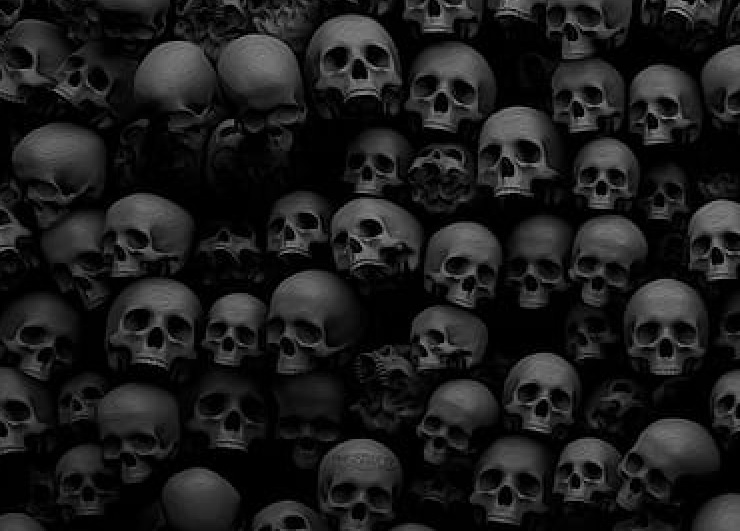
Given all of the luxurious buildings constructed over the cemeteries along St. James Street, many question if they are haunted due to being built over the Dead.
For example, the French Catholics created separate cemeteries for the poor, Black people and Indigenous people.
The February, 1885 edition of La Patrie noted in a column called “Le Bon Vieux Temps: “Speaking of slaves, I must say that the Negro cemetery in Montreal in 1800 was a plot of land located at the corner of St Jacques and St Pierre streets, precisely on the spot where the Mechanics Institute was built.”
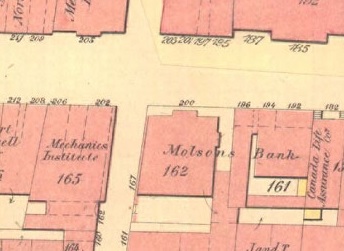
Indeed, in 1855 the Mechanics Institute was built on the former cemetery for Black people. The mandate of this organization was to “educate workers for the emerging industries of the growing city.“ Apparently, that “education” did not include any Black History or the fact that a Black burial ground was desecrated to allow the construction of the Institute.
Today, the former Royal Bank of Canada occupies the site and hosts the popular Crew Collective & Café.

This high-end café and co-working space is reputed to experience paranormal activity such as malfunctioning coffee machines, flickering lights and doors opening and closing by themselves.
Another example can be found on a colonial map where the cartographer noted a “Cimetière des sauvages” (a racist expression for an Indigenous cemetery) just outside the city walls to the north of the Sulpician Seminary.
There is very little historical knowledge about who was buried there or why.
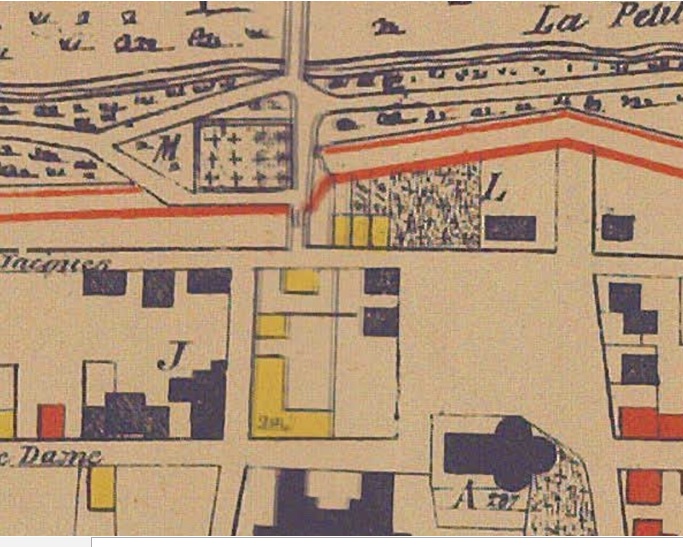
Was the cemetery for the Indigenous people killed or executed by French authorities? Was it for those who converted to Catholicism and then passed away? Or was the cemetery already present when the French started colonizing the island? It is certainly a mystery.
Today, there is a luxury condominium on the site called Les Étoiles and there is not even a historical plaque to mark the now-destroyed Indigenous cemetery. Rumours swirl that the underground parking in this building is haunted, although the details are thin and more research is required.
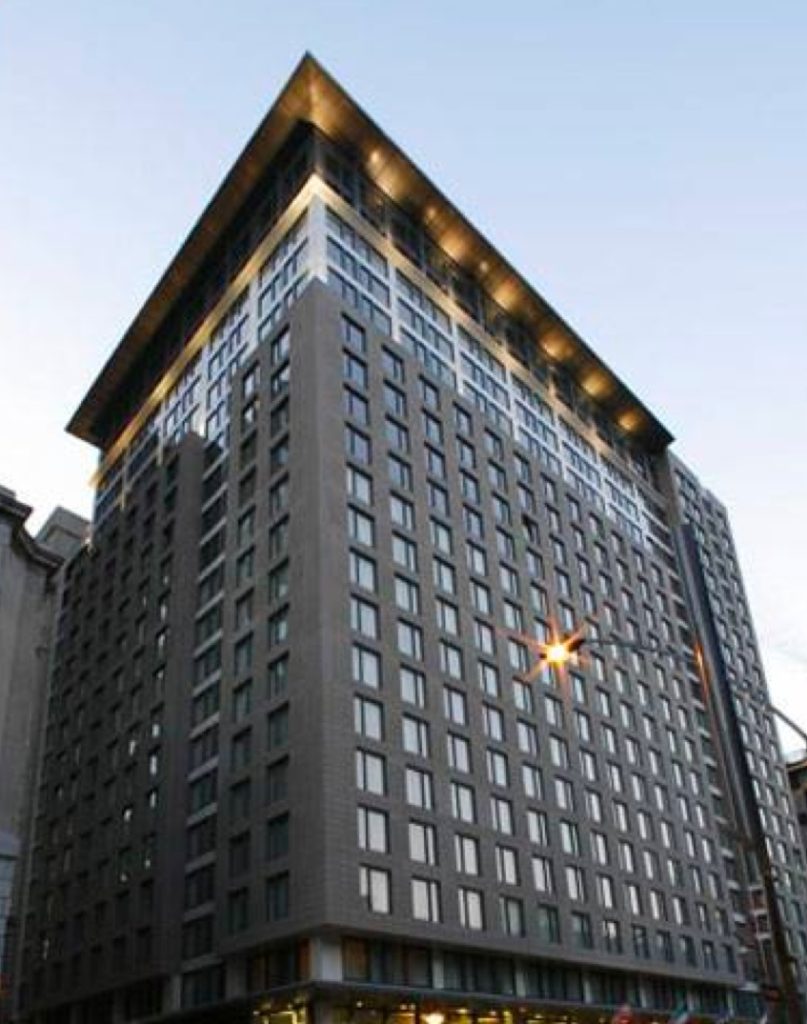
Another example is the St. James Theatre, which exists in the former Canadian Imperial Bank of Commerce. This magnificent building was constructed in 1907 on the site a former Methodist Church.
The Great St. James Street Church, built in 1845, was considered Montreal’s most comfortable and welcoming house of worship.

With its magnificent interior and beautiful stained-glass windows, parishioners absolutely loved attending services here. Indeed, the Methodist Church made many converts because of the Great St. James Street Church’s positive reputation.
Some people called the church “Heaven on Earth.” It was said that when parishioners passed away their souls drifted up into the rafters of the church because they wanted to spend eternity there.
When the church was demolished to make way for the Canadian Imperial Bank of Commerce, a decision was made to incorporate the stained glass windows into the wall behind the banking counter.
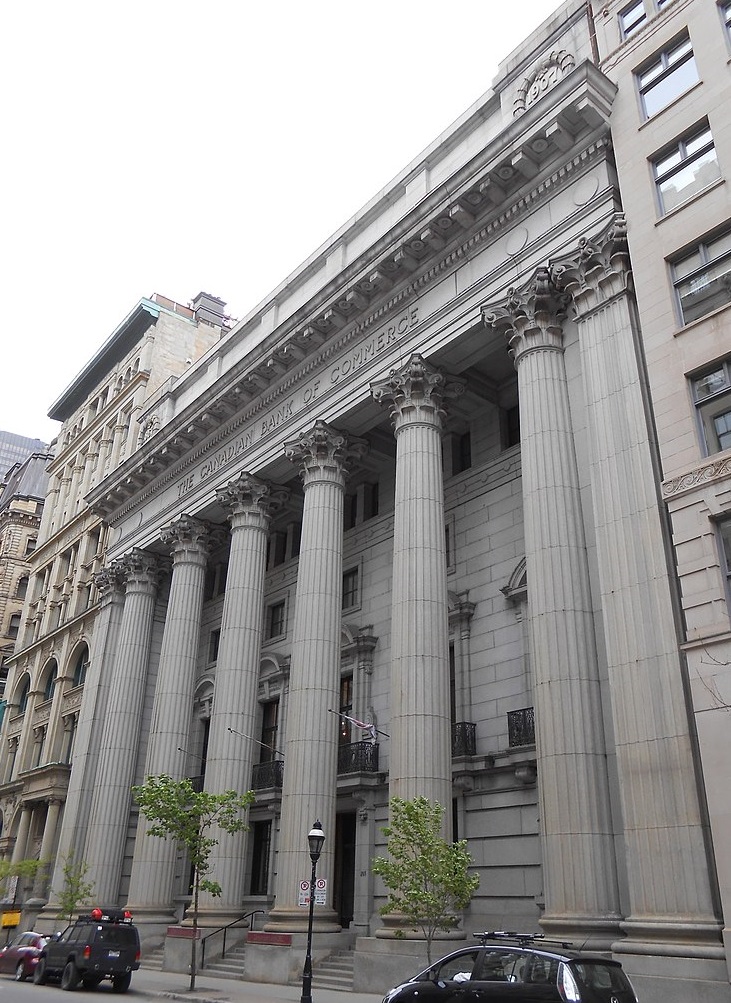
During construction, workers uncovered two skeletons when digging the foundations of the bank. Given that forgotten cemeteries exist all over Old Montreal, the find was creepy but no surprising.
As the bank neared completion, there were rumors that it might become cursed or haunted. Replacing a house of worship with a house of Capitalism was likely to displease God, after all.
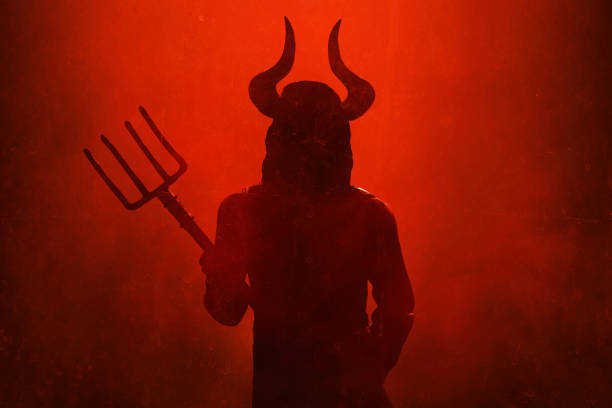
Sure enough, strange paranormal activity started happening once the Canadian Imperial Bank of Commerce opened its doors.
From the first day of operation, bank tellers encountered disturbing feelings of unease. The most common description was as though someone – or something – was staring at them from behind.
As the days and weeks passed, the feelings of discomfort intensified. The bank began to take on the atmosphere of a funeral home.
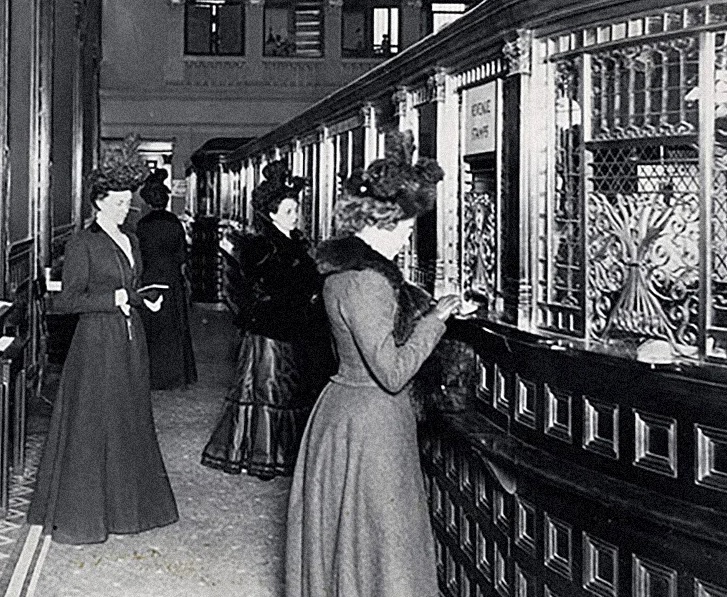
There were problems with the employees such as a high turnover and frequent absences.
Then something truly bizarre began to happen. The beautiful stained-glass windows behind the tellers’ desk began to slowly change. Some parts of vibrant red, green, yellow and blue glass began fading to the color of human bone. Within a month, the image of two large human skulls had appeared within the stained-glass windows, staring down at clients and the backs of the bank clerks.
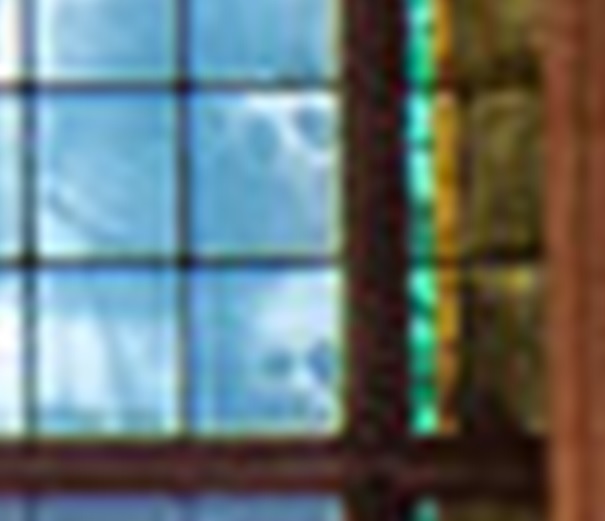
The building also housed the Montreal offices of the White Star Line. It is where the tickets for the RMS Titanic were sold. On April 15th, 1912, when the Titanic hit an iceberg and sank, the bank to became even more disturbing and ostracized.
As the years passed, the problems persisted. Employees hated working there and clients complained that the skulls staring down at them from the stained-glass windows were ruining their banking experience. They claimed that the skulls intimidated them and brought on bad luck. Some clients started moving investments and accounts to other banks because of the morose employees and terrifying skulls in the windows.

Because the situation was becoming unbearable. In the early 1960s, officials made a decision to build a new, modern 45-story CIBC bank tower. The head office vacated the St. James location in 1962 for the new downtown location.
In 2012, the old bank was finally repurposed. The owners of The Rialto Theatre purchased the former Canadian Imperial Bank of Commerce and re-branded it as The St. James Theatre. After a full renovation, today it is a high-end venue that hosts weddings, parties and private corporate events.
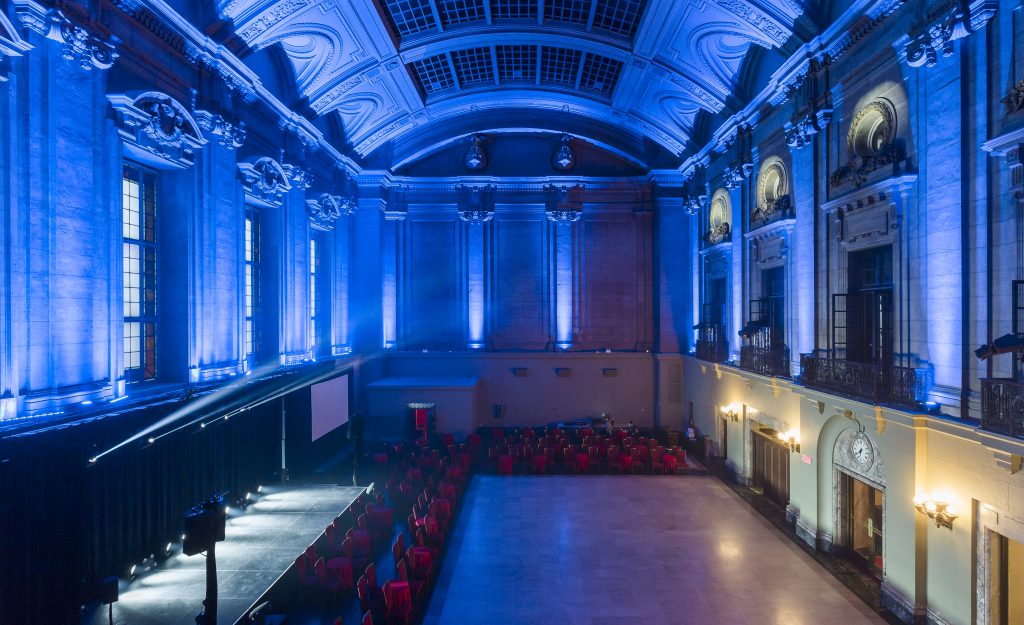
While it’s unknown if whatever spirits that haunted the bank continue to disturb the theatre, the bizarre skulls continue to stare down from the stained-glass windows at the fancy events that unfold within the venue.
There are also other crypts full of bodies in Old Montreal, such as those of the Notre-Dame Basilica and Notre-Dame-de-Bonsecours Church. Other since-demolished churches, chapels and the Motherhouse of the Sisters of Notre-Dame may also contain forgotten remains under the ground.
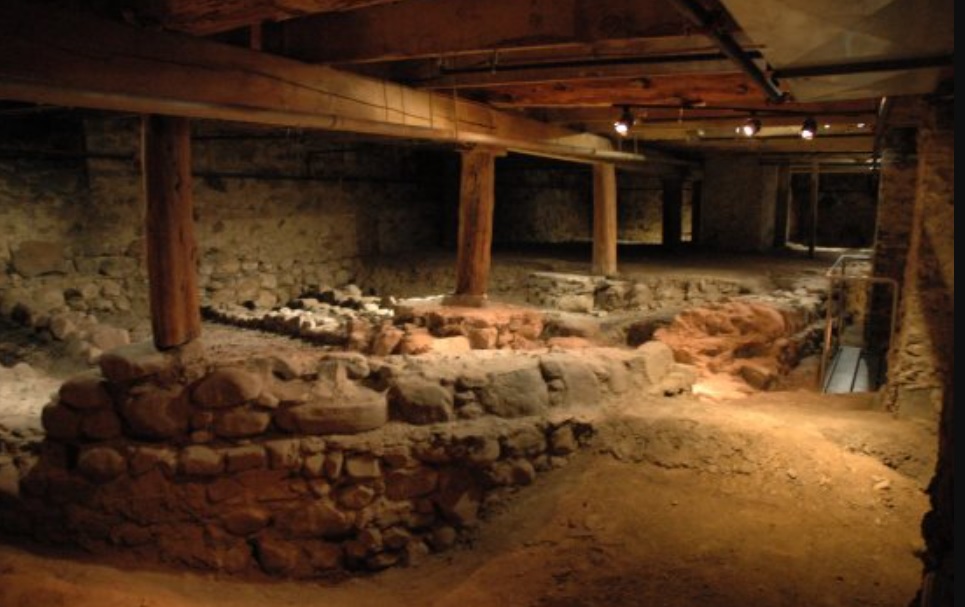
In 1799, the Attorney General of Lower Canada abruptly halted all burials “within the walls”.
One consequence of the British take-over was the influx of Protestant settlers, which put a lot more pressure on the small cemeteries within the walls. The population had quadrupled within 40 years, reaching up to 5000 city-dwellers. Space was running out to bury the Dead within the City Walls.
As such, the cemeteries were busting at the seams and could no longer accommodate the endless corpses being sent there.
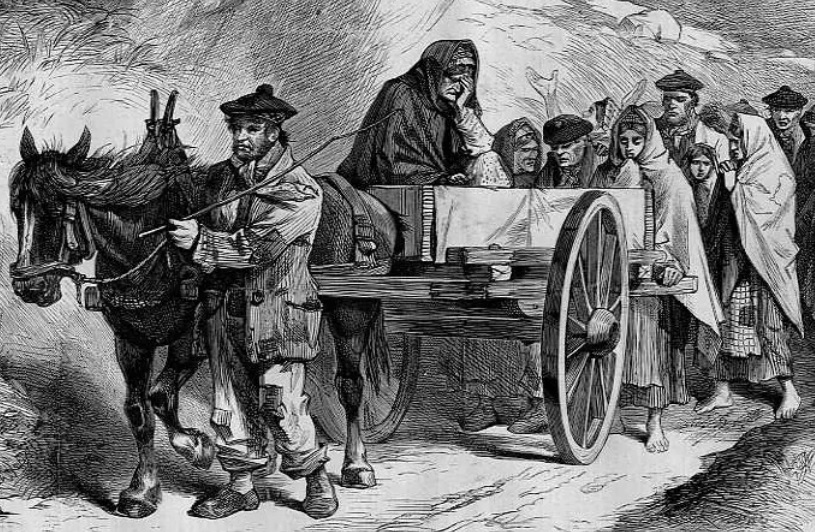
There were fears that with so many dead bodies in the vicinity, contagious diseases like Cholera and Smallpox might spread from beyond the graves of those affected by these ailments.
As such, the churchwardens of the Notre Dame Parish submitted their petition to close the burial grounds once and for all. The Attorney General of Lower Canada approved the petition and demanded the closure of all the cemeteries “within the walls”.
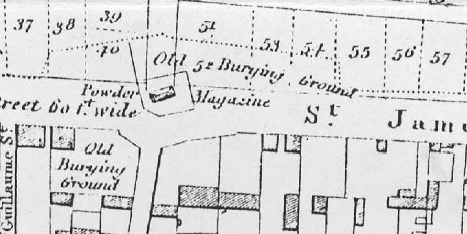
In response, authorities opened up two large new cemeteries in 1799. Well away from the city proper, officials established both the Protestant Burying Ground and the Catholic Saint-Antoine Cemetery to welcome the over-flow of the Dead. Once these were full in the mid-1800s, new cemeteries were opened atop Mount Royal.
Today, those roaming the cobblestone streets of Old Montreal are literally walking over the Dead. Hopefully, with more research, Montreal will one day be able to publish its own authentic map of all the forgotten cemeteries littering the historic district.
Company News
Haunted Montreal’s seasons of public outdoor tours is now in full swing! Offered every Friday and Saturday night, we have four ghost tours on rotation (Old Montreal, Griffintown, Downtown and Mount Royal.)
Our Haunted Pub Crawl is also offered every Sunday at 3 pm in English. For tours in French, these happen on the last Sunday of every month at 4 pm.
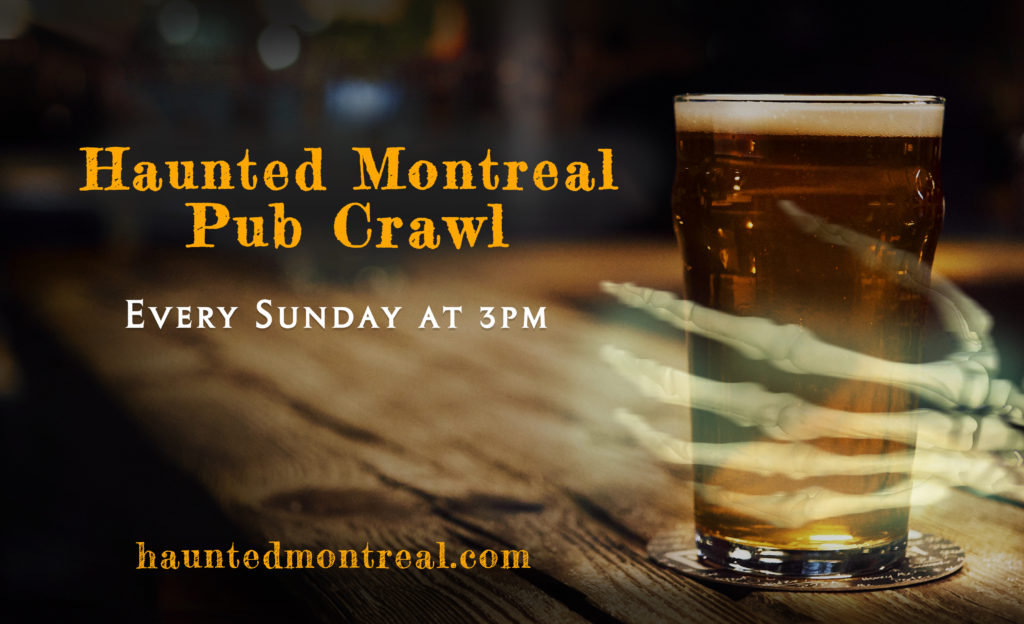
Our Paranormal Investigation in the Old Sainte Antoine Cemetery happens on the first Friday and Saturday of every month.
Private tours for any of our experiences (including outdoor tours) can be booked at any time based on the availability of our actors. Clients can request any date, time, language and operating tour. These tours are based on the availability of our actors and start at $190 for small groups of up to 7 people.
Email info@hauntedmontreal.com to book a private tour!

You can bring the Haunted Montreal experience to your office party, house, school or event by booking one of our Travelling Ghost Storytellers today. Hear some of the spookiest tales from our tours and our blog told by a professional actor and storyteller. You provide the venue, we provide the stories and storyteller. Find out more and then contact info@hauntedmontreal.com
Our team also releases videos every second Saturday, in both languages, of ghost stories from the Haunted Montreal Blog. Hosted by Holly Rhiannon (in English) and Dr. Mab (in French), this initiative is sure to please ghost story fans!

Please like, subscribe and hit the bell!
In other news, if you want to send someone a haunted experience as a gift, you certainly can!
We are offering Haunted Montreal Gift Certificates through our website and redeemable via Eventbrite for any of our in-person or virtual events (no expiration date).
Finally, we have opened an online store for those interested in Haunted Montreal merchandise. We are selling t-shirts, magnets, sweatshirts (for those haunted fall and winter nights) and mugs with both the Haunted Montreal logo and our tour imagery.
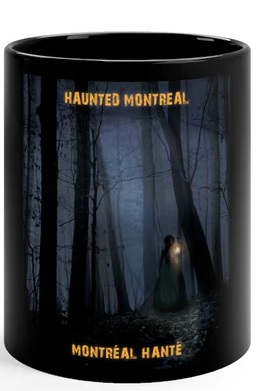
Purchases can be ordered through our online store.
Haunted Montreal would like to thank all of our clients who attended a ghost walk, haunted pub crawl, paranormal investigation or virtual event!
If you enjoyed the experience, we encourage you to write a review on our Tripadvisor page, something that really helps Haunted Montreal to market its tours.

Lastly, if you would like to receive the Haunted Montreal Blog on the 13th of every month, please sign up to our mailing list.
Coming up on July 13: Hôtel Place d’Armes
In 2009, the concierge at the luxurious Hôtel Place d’Armes in Old Montreal revealed that the building is haunted. Suite 1703 is said to host a mysterious woman who sometimes asks Room Service for a glass of water. However, when they bring it to her, she vanishes into thin air. Described as “a thin, beautiful woman with long dark hair and wearing a long, black dress,” the ghost has an American accent and is known to disturb staff members with her paranormal antics.
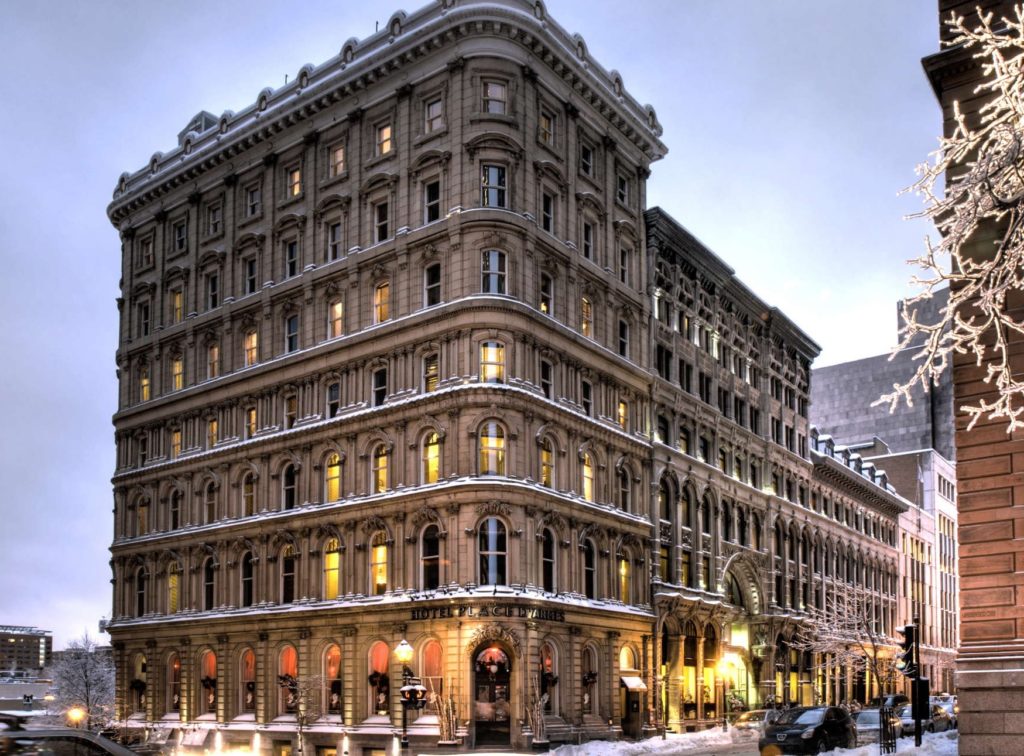

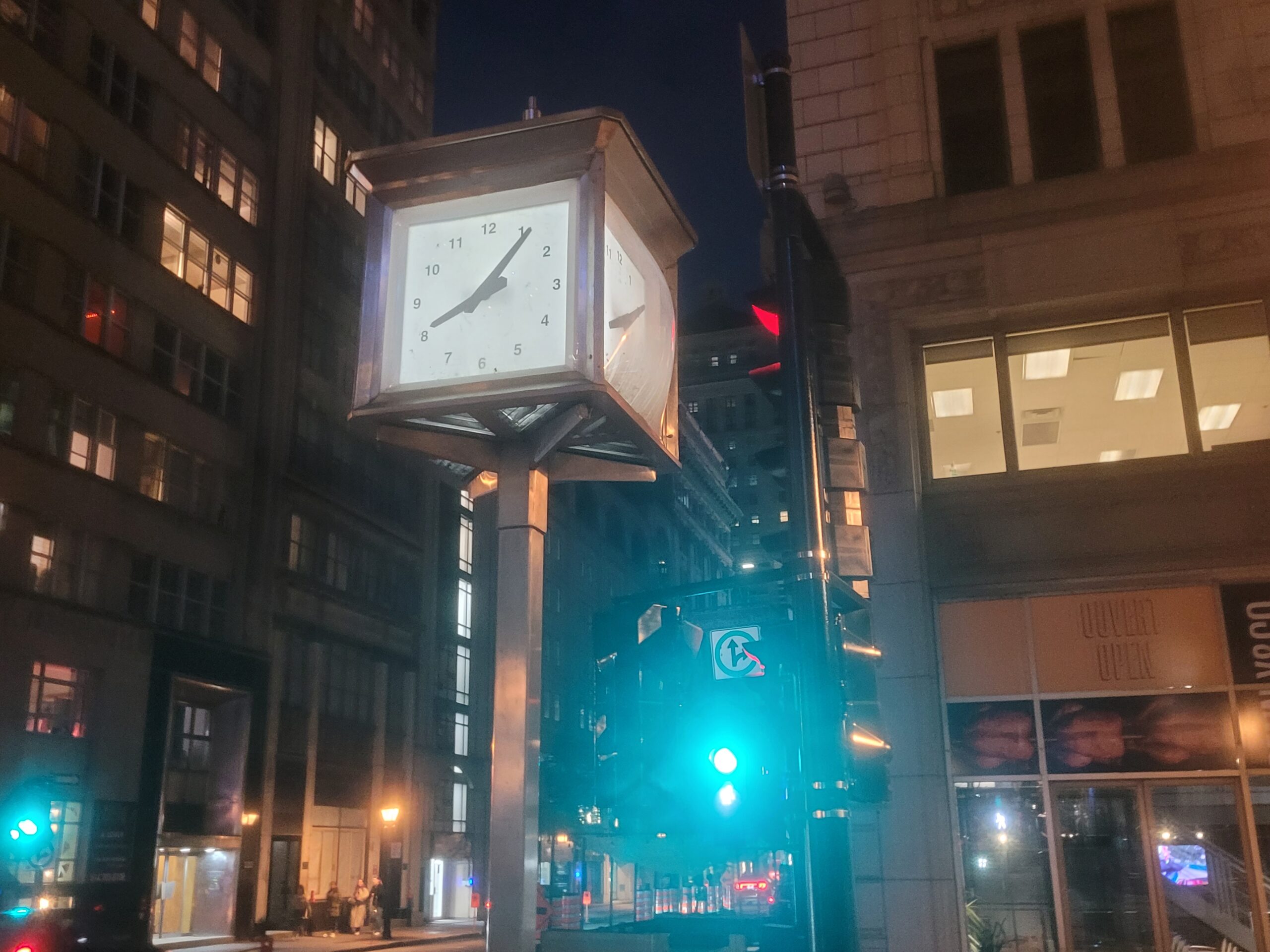
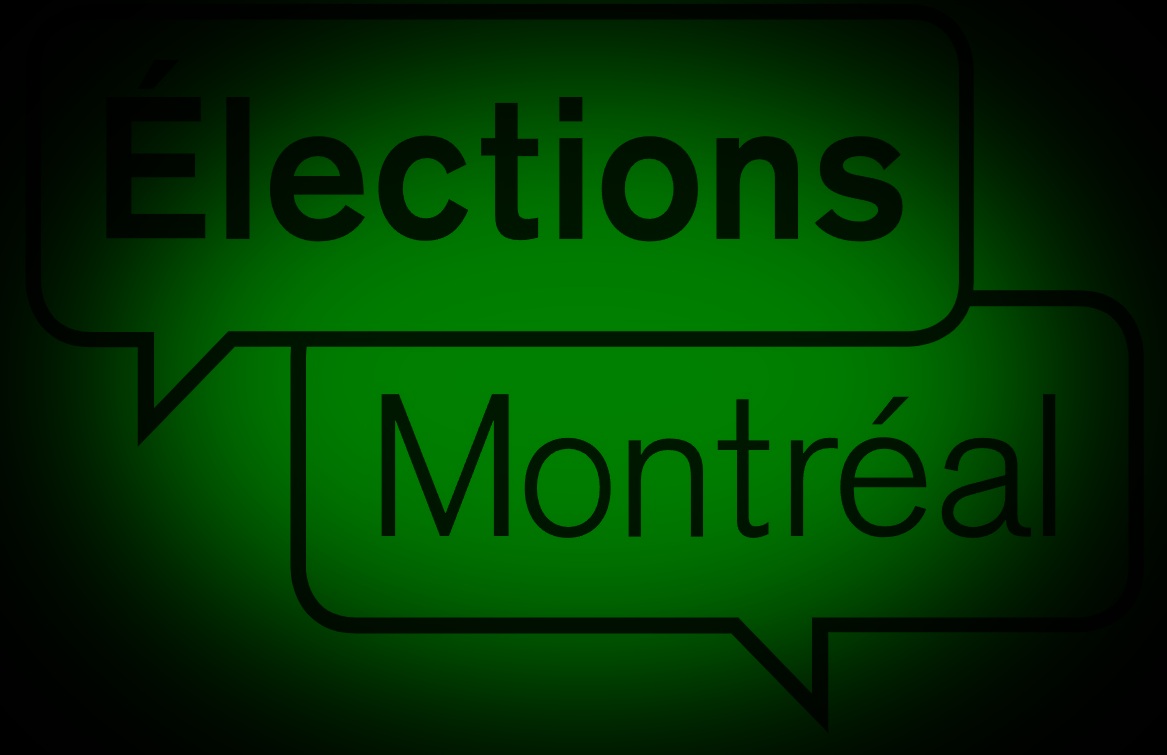
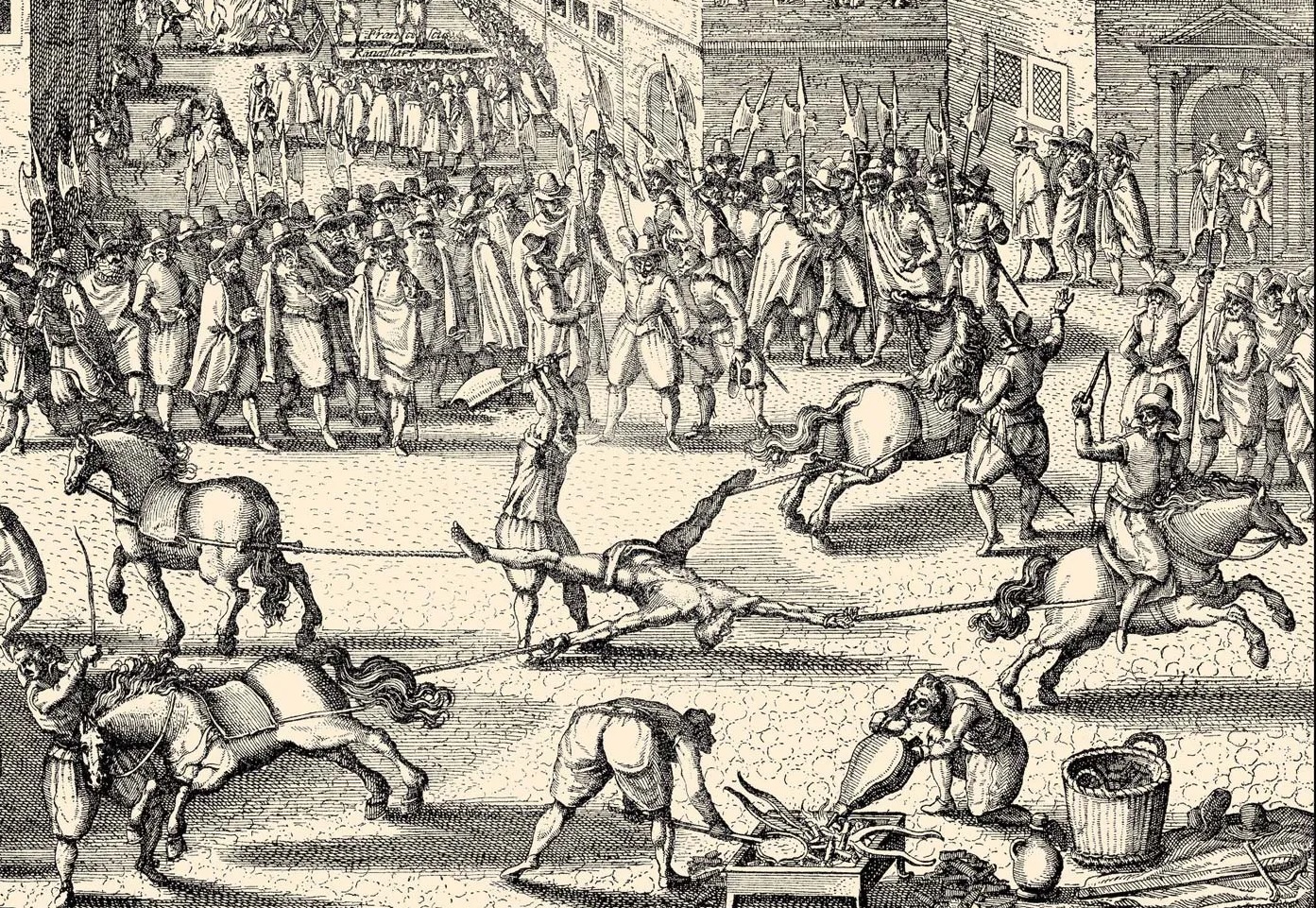
Comments (0)